Exploring the Diverse World of Ceramics Through Different Cultures
Ceramics, often viewed as mere objects of utility, are, in fact, a vivid reflection of human creativity and cultural identity. From the intricate designs of Japanese porcelain to the earthy tones of Native American pottery, the world of ceramics is a rich tapestry woven with history, tradition, and artistry. Each piece tells a story, not just of its maker but of the community and culture from which it originates. As we explore the diverse world of ceramics, we’ll uncover the unique techniques, historical significance, and artistic expressions that define pottery across various cultures.
Imagine walking through a bustling market in Morocco, where vibrant ceramic tiles adorn the walls, each pattern echoing centuries of craftsmanship. Or picture a serene Japanese tea ceremony, where delicate tea bowls are not just functional items but vessels of tranquility and tradition. This article aims to take you on a journey through these fascinating realms, highlighting how ceramics serve as a bridge between the past and the present.
In our exploration, we will delve into the history of ceramics, tracing its evolution from ancient times to modern-day practices. We’ll examine the various techniques of ceramic production that artisans employ, showcasing the skills passed down through generations. Furthermore, we’ll look at the role ceramics play in cultural rituals, revealing how these objects are interwoven with the beliefs and values of different communities.
As we embark on this journey, prepare to be surprised by the explosion of creativity and cultural significance that ceramics embody. Whether you're an art enthusiast, a history buff, or simply curious about the world around you, the stories held within these clay creations are sure to captivate your imagination.
Understanding the evolution of ceramics provides insight into ancient civilizations, their daily lives, and cultural practices. This section explores how pottery has developed through the ages and its significance in various cultures.
Ceramic production involves a variety of techniques that differ by culture. This section examines methods such as wheel-throwing, hand-building, and glazing, showcasing the artistry and craftsmanship involved in creating ceramic pieces.
Hand-building techniques, like pinch pots and coil building, offer a glimpse into the personal touch of artisans. This subsection highlights the uniqueness of handcrafted ceramics and their cultural significance.
Pinch pots are one of the oldest methods of pottery-making. This section explains the process and its cultural relevance, showcasing how this technique is still practiced today.
Coil building allows for larger and more intricate designs. Here, we explore the history and application of this technique in various cultures, emphasizing its artistic possibilities.
Wheel-throwing revolutionized pottery production, enabling uniform shapes and sizes. This subsection discusses its origins and how it has been adapted in different cultures worldwide.
Ceramics play a vital role in many cultural rituals and traditions. This section explores how pottery is used in ceremonies, celebrations, and everyday life, reflecting the values and beliefs of different communities.
The distinction between functional and decorative ceramics reveals much about a culture's priorities. This section analyzes the balance between utility and artistry in ceramic practices across various societies.
Ceramics often carry deep symbolism related to identity and heritage. This subsection investigates how specific designs and motifs convey cultural narratives and beliefs, enriching the understanding of ceramics in context.
- What are the primary types of ceramics? Ceramics can be broadly categorized into earthenware, stoneware, and porcelain, each with unique properties and uses.
- How do different cultures influence ceramic styles? Cultural values, available materials, and historical context shape the designs and techniques of ceramics in various regions.
- Can anyone learn to make ceramics? Absolutely! Many community centers and art schools offer pottery classes for all skill levels, making ceramics accessible to everyone.
- What is the significance of ceramics in rituals? Ceramics often serve as vessels for food, drink, or offerings, playing a crucial role in cultural ceremonies and traditions.

The History of Ceramics
Understanding the evolution of ceramics is like peeling back the layers of an onion, revealing the rich history and cultural significance embedded within each piece. From the earliest days of human civilization, pottery has played a pivotal role in daily life, serving not just as a functional necessity but also as a canvas for artistic expression. The origins of ceramics can be traced back to around 29,000 BC, with the discovery of the Venus of Dolní Věstonice, a figurine made from clay. This early example of pottery demonstrates not only the utility of ceramics but also the innate human desire to create and represent the world around us.
Throughout the ages, different cultures have developed their own unique styles and techniques, influenced by their environment, available materials, and social structures. For instance, ancient Chinese potters innovated with high-fired stoneware and intricate glazes, while the indigenous peoples of the Americas crafted pottery using locally sourced clay, often adorned with symbolic designs. The history of ceramics is a fascinating tapestry woven from diverse threads of culture, tradition, and innovation.
As we delve deeper into the timeline of ceramics, we can identify several key periods that mark significant advancements in pottery-making:
| Period | Key Developments | Cultures |
|---|---|---|
| Prehistoric | Introduction of basic pottery techniques, such as hand-building. | Global (e.g., Europe, Asia, Africa) |
| Ancient Civilizations | Development of the potter's wheel and glazing techniques. | Mesopotamia, Egypt, China |
| Medieval | Refinement of glazing and decorative styles, including tin-glazed pottery. | Europe, Middle East |
| Modern Era | Industrialization of ceramics production and the rise of studio pottery. | Global |
These periods not only highlight the technological advancements in ceramic production but also reflect the changing societal values and artistic movements of their time. For example, during the Medieval period, the emergence of tin-glazed pottery in Europe showcased a shift towards decorative arts, where pottery became a medium for storytelling and cultural expression. Each piece of pottery tells a story, capturing the essence of the people and the era it represents.
In essence, the history of ceramics is not merely a chronicle of techniques and styles; it is a mirror reflecting the human experience. From functional vessels used in daily life to intricate artworks displayed in galleries, ceramics encapsulate the creativity, challenges, and triumphs of cultures throughout history. As we continue to explore the world of ceramics, we uncover not just the artistry involved but also the profound connections between people, their traditions, and the very earth from which their materials are drawn.
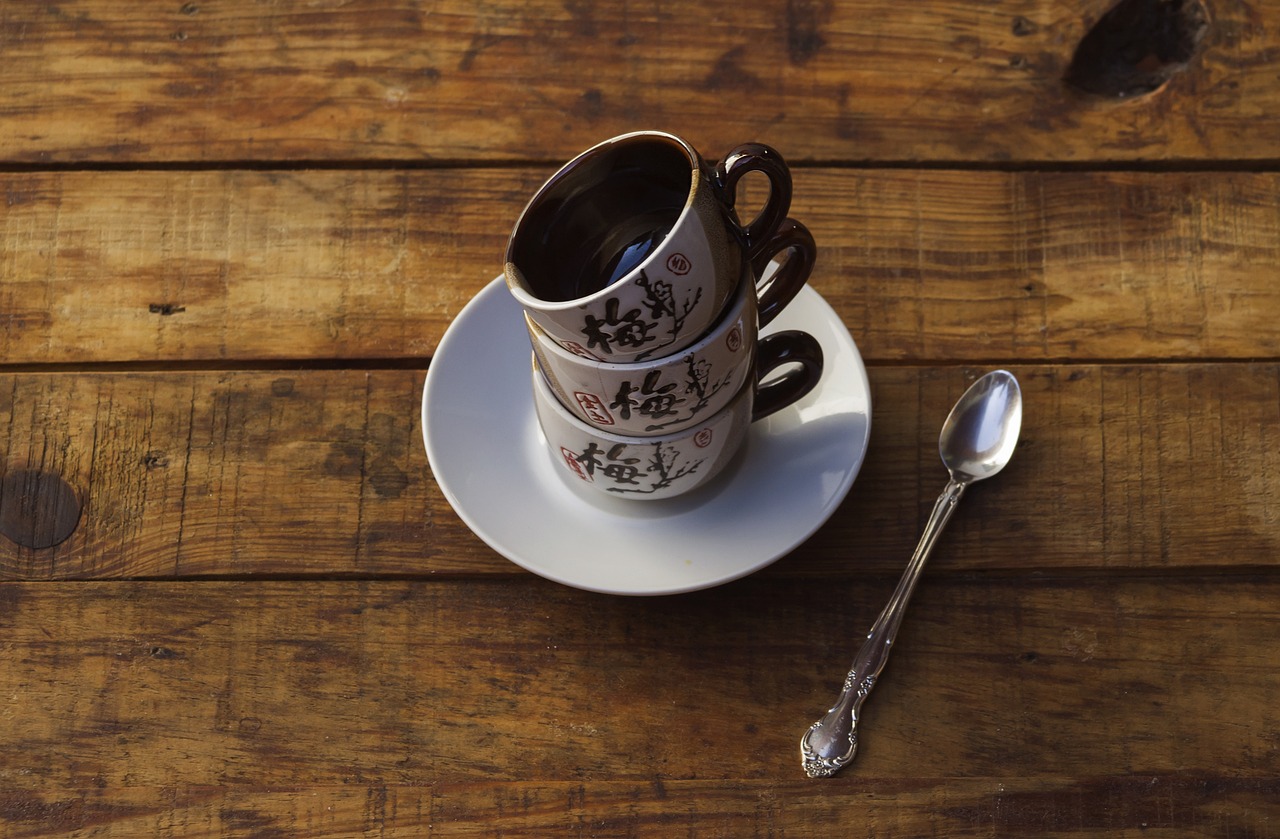
Techniques of Ceramic Production
Ceramic production is an art form that has evolved significantly over thousands of years, showcasing the unique techniques that different cultures have developed. From the ancient artisans of Mesopotamia to contemporary ceramicists, the methods used to create pottery are as diverse as the cultures themselves. Each technique carries with it a story, a history, and a cultural significance that reflects the values and creativity of its people. Understanding these techniques not only enhances our appreciation for ceramics but also connects us to the legacies of those who came before us.
Among the most prominent methods of ceramic production are wheel-throwing, hand-building, and glazing. Each of these techniques allows for a different level of creativity and expression, resulting in a wide array of ceramic forms and finishes. For instance, wheel-throwing, which involves shaping clay on a rotating wheel, enables potters to create uniform shapes with precision. This method has been widely adopted across various cultures, from the ancient Chinese who perfected it to modern artists who continue to innovate. On the other hand, hand-building techniques like pinch pots and coil building allow for a more personal touch, giving artisans the freedom to express their individuality through their work.
Hand-building techniques are often seen as the heart and soul of ceramic artistry. They are not just methods of production; they are a means of storytelling and cultural expression. For example, the pinch pot technique is one of the oldest forms of pottery-making, dating back thousands of years. It involves taking a ball of clay and pinching it into shape, allowing for a unique and organic form. This method is still practiced today, often by those who appreciate the tactile nature of working with clay. It embodies the notion that every piece is unique, much like the artisan who created it.
The pinch pot technique exemplifies the simplicity and beauty of hand-made ceramics. To create a pinch pot, an artisan starts with a small ball of clay, then uses their fingers to pinch and shape it into a vessel. This method not only allows for creativity but also fosters a deep connection between the maker and the material. Each pinch pot tells a story, capturing the essence of the artisan’s hand, making it a cherished piece in any collection. Moreover, many cultures have used pinch pots for functional purposes, such as cooking or storage, which further highlights their significance in daily life.
Coil building, another traditional hand-building method, allows for more complex and larger designs. This technique involves rolling out long strips of clay, which are then stacked and blended together to form a vessel. The beauty of coil building lies in its adaptability; artisans can create anything from simple bowls to intricate sculptures. This method has been utilized by various cultures, including the Native American tribes and ancient Egyptians, showcasing the diversity of artistic expression. The process itself is a labor of love, requiring patience and skill, and the final product often reflects the cultural heritage of the maker.
Wheel-throwing revolutionized the world of ceramics, bringing a new level of efficiency and uniformity to pottery production. This technique involves using a potter's wheel to spin a lump of clay, allowing the potter to shape it into symmetrical forms. The origins of wheel-throwing can be traced back to ancient Mesopotamia, where it played a crucial role in the development of pottery as a craft. Over time, this technique has been adapted by cultures around the world, each adding its own flair. For example, Japanese potters are renowned for their mastery of the wheel, creating pieces that are both functional and aesthetically pleasing.
In summary, the techniques of ceramic production are as varied as the cultures that practice them. From the intimate touch of hand-building to the precision of wheel-throwing, each method offers a glimpse into the artistic and cultural values of its practitioners. As we explore these techniques, we not only gain insight into the art of ceramics but also celebrate the rich tapestry of human creativity.
- What is the oldest known ceramic technique?
The pinch pot technique is considered one of the oldest known methods of pottery-making, dating back to prehistoric times. - How does wheel-throwing differ from hand-building?
Wheel-throwing uses a rotating wheel to shape clay, resulting in uniform pieces, while hand-building allows for more personal and varied forms. - What cultural significance do ceramics hold?
Ceramics often reflect cultural identity, beliefs, and practices, serving both functional and decorative purposes in various societies.
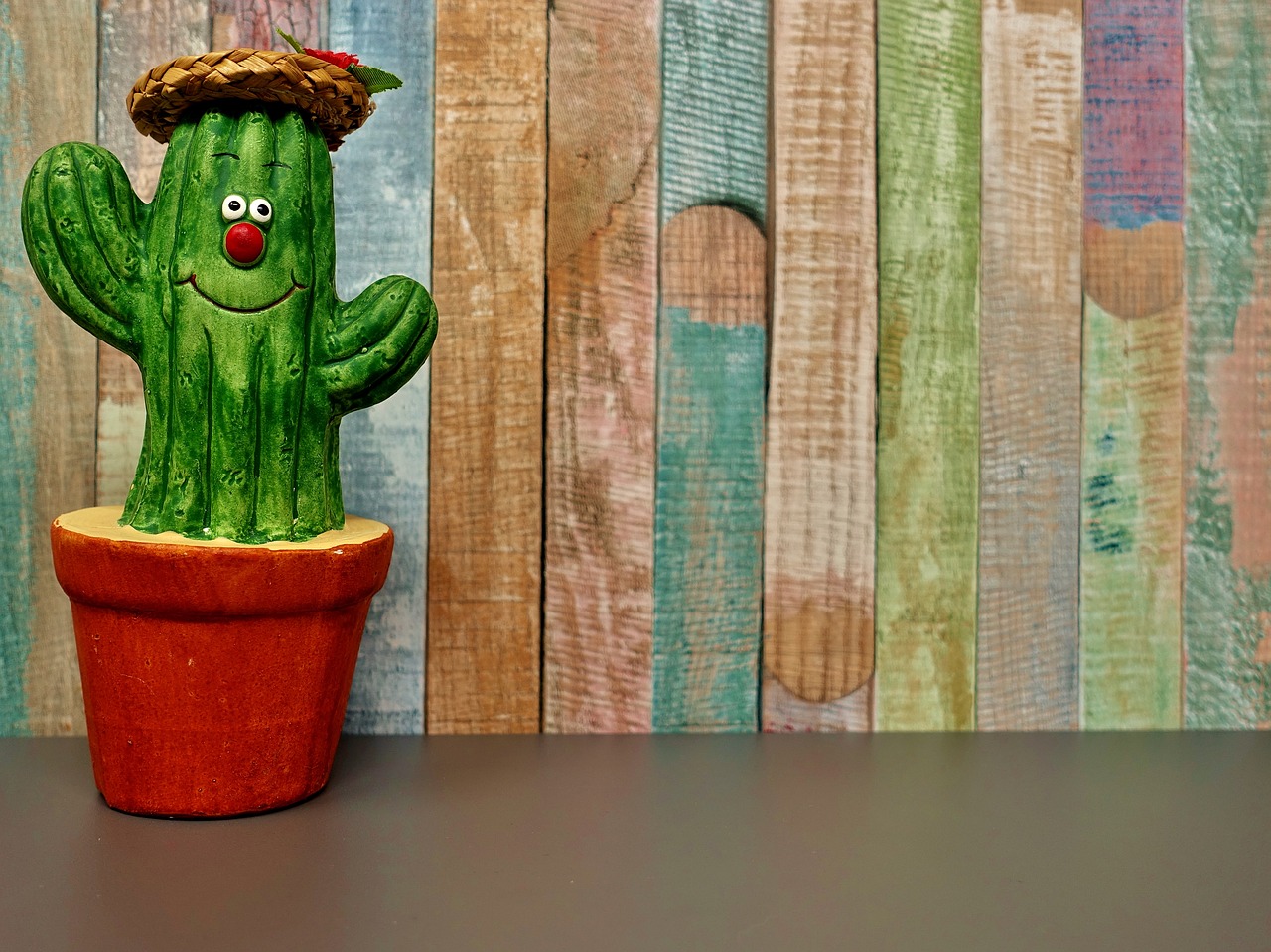
Traditional Hand-Building Methods
When we think about pottery, the image of a potter skillfully shaping clay on a spinning wheel often comes to mind. However, there's a whole world of that brings a personal touch to ceramics. These techniques, which include pinch pots and coil building, offer a fascinating glimpse into the artistry and creativity of artisans throughout history. Each method is not just a way to create functional objects but also a means of expressing cultural identity and personal stories.
Hand-building techniques are often seen as the heart and soul of pottery, where the potter’s hands become the tools of innovation. Unlike wheel-throwing, which requires a certain level of skill and equipment, hand-building allows anyone to dive into the world of ceramics, making it accessible to all. Imagine molding a simple lump of clay into a beautiful piece of art; it’s a process that connects the maker with the material in a deeply personal way.
One of the most beloved hand-building techniques is the pinch pot. This method is as old as pottery itself, dating back thousands of years. To create a pinch pot, the artisan starts with a ball of clay, which is then pinched and manipulated into a desired shape. This technique not only showcases the potter's creativity but also allows for a unique expression of form and texture. Each pinch pot is distinct, reflecting the individual style of the maker. It’s like a fingerprint; no two are exactly alike.
Another fascinating technique is coil building. This method involves rolling out long snakes of clay and stacking them to form larger and more intricate designs. Coil building opens up a world of artistic possibilities, allowing potters to create everything from simple bowls to elaborate sculptures. The process requires patience and skill, as each coil must be blended seamlessly into the next to ensure structural integrity. Historically, this technique has been used in various cultures, often resulting in stunning works of art that tell a story of their own.
To illustrate the differences between these techniques, consider the following table:
| Technique | Description | Cultural Significance |
|---|---|---|
| Pinch Pot | Crafting clay by pinching and shaping with fingers. | Represents individuality and personal expression. |
| Coil Building | Stacking and blending coils of clay to form shapes. | Often used in traditional cultures for larger pieces. |
In many cultures, these hand-building techniques are not just about creating art; they are also about preserving traditions. Artisans pass down their skills and knowledge through generations, ensuring that the stories and values of their communities are kept alive. This connection to heritage is what makes hand-built ceramics so special. They are not merely objects; they are vessels of history, culture, and personal expression.
So, the next time you admire a piece of pottery, take a moment to appreciate the craftsmanship behind it. Each curve and contour tells a story of the artisan's journey, their culture, and their passion for the art of ceramics. Whether it’s a simple pinch pot or an elaborate coil-built vase, the beauty of hand-built ceramics lies in their uniqueness and the human touch that goes into making them.
- What are the main hand-building techniques in ceramics? The primary techniques include pinch pots, coil building, and slab construction.
- Can anyone learn hand-building techniques? Absolutely! Hand-building is accessible to beginners and requires minimal tools.
- How do hand-built ceramics differ from wheel-thrown pieces? Hand-built ceramics often have a more organic, unique shape, while wheel-thrown pieces are typically more uniform.
- What materials are used in hand-building ceramics? The primary material is clay, but various additives can enhance texture and durability.

Pinch Pot Techniques
The art of making pinch pots is not just a craft; it's a connection to our ancestors and their way of life. This ancient pottery technique dates back thousands of years, and its simplicity is what makes it so profound. Imagine sitting under the warm sun, with clay in your hands, feeling the cool, damp texture as you shape it into something beautiful. This tactile experience is what pinch pots are all about. The technique involves using your fingers to pinch and shape a ball of clay into a vessel, allowing for a personal touch that is often lost in mass production.
What’s fascinating about pinch pots is their versatility. Artisans can create anything from simple bowls to intricate decorative pieces. Each pot carries the unique fingerprint of its maker, making it a true one-of-a-kind creation. This method encourages creativity and experimentation, as artists can easily manipulate the clay to achieve various shapes and sizes. Moreover, the pinch pot technique is accessible to everyone, from seasoned potters to curious beginners. All you need is some clay and a bit of imagination!
Historically, pinch pots have served various purposes across cultures. For instance, in many indigenous communities, these pots were used for cooking, storage, and ceremonial practices. They were often adorned with unique designs that reflected the creator's culture and beliefs. Today, artists continue to honor this tradition by incorporating modern aesthetics while still respecting the age-old methods. The beauty of pinch pots lies in their ability to tell stories—each curve and indentation speaks to the culture and history from which it originates.
In contemporary art, pinch pots have found a new life. Many artists use this technique to explore themes of identity, memory, and community. By creating pinch pots, they are not only crafting functional items but also engaging in a dialogue about the past and present. This blend of tradition and innovation creates a rich tapestry of artistic expression that resonates with people from all walks of life.
To illustrate the significance of pinch pots, let’s take a look at some notable examples from different cultures:
| Culture | Significance | Common Uses |
|---|---|---|
| Native American | Spiritual and ceremonial | Cooking, storage, rituals |
| Japanese | Artistic expression | Tea ceremonies, decoration |
| African | Community bonding | Functional household items |
As we delve deeper into the world of ceramics, it’s clear that pinch pots are more than just clay vessels; they embody a rich history and cultural significance that transcends time. Whether used for practical purposes or as a medium for artistic expression, these pots remind us of the enduring connection we have to our past. So, the next time you see a pinch pot, take a moment to appreciate the story it tells and the hands that shaped it.
- What materials do I need to make pinch pots? You will need clay, water, and basic sculpting tools.
- Can beginners learn to make pinch pots? Absolutely! Pinch pots are perfect for beginners due to their simplicity.
- How do I decorate my pinch pot? You can use various techniques, such as carving, painting, or adding textures.
- Are pinch pots functional? Yes, many pinch pots are functional and can be used for cooking or serving.
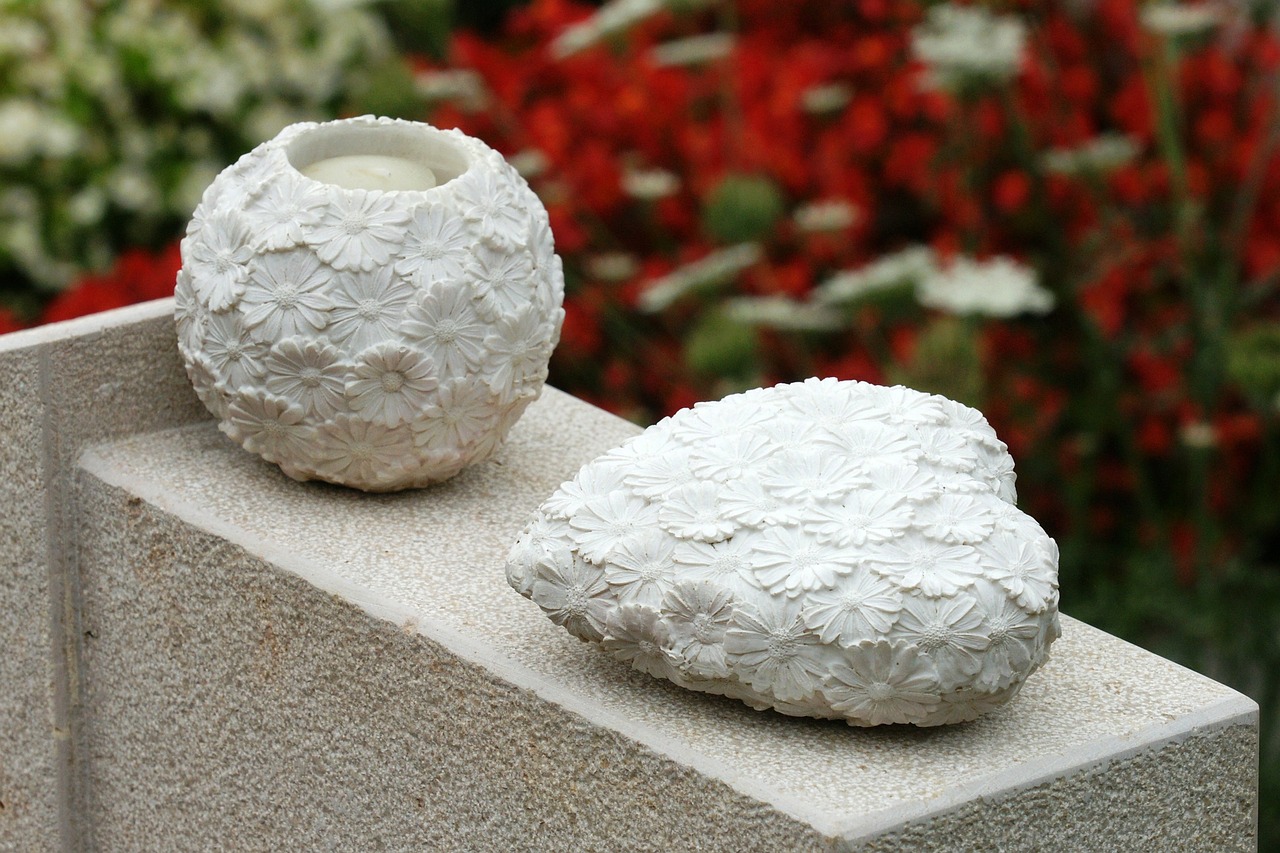
Coil Building Techniques
Coil building is a fascinating and ancient pottery technique that allows artisans to create larger and more intricate ceramic pieces. This method involves rolling out long, snake-like coils of clay and stacking them to form the walls of a vessel. Unlike wheel-throwing, which often emphasizes uniformity and symmetry, coil building embraces the organic and the irregular, showcasing the unique touch of the artisan. Imagine sculpting a towering clay pot, layer by layer, like building a sandcastle at the beach, where each coil represents a new wave of creativity and expression.
The beauty of coil building lies not just in its aesthetic possibilities but also in its cultural significance. Many cultures around the world have utilized this technique, each adding their own flair and tradition. For instance, in various Indigenous cultures, coil building is not merely a method of production but a way to connect with ancestral practices, allowing artisans to pass down stories and skills through generations. This connection to history is palpable; every coil tells a story, every curve reflects the hands that shaped it.
To give you a clearer picture of how coil building works, let's break down the process into a few simple steps:
- Preparation: Start with a lump of clay, kneading it until it’s pliable and free of air bubbles.
- Creating Coils: Roll the clay into long, even coils, ensuring they maintain a consistent thickness to support the structure.
- Building Up: Begin stacking the coils, smoothing the joints with fingers or tools to create a seamless wall.
- Shaping: As the vessel rises, you can manipulate its shape, making it wider, narrower, or even more intricate.
- Final Touches: Once the desired height and shape are achieved, refine the surface, adding textures or patterns that reflect your personal style or cultural motifs.
Coil building is not just about the end product; it’s a meditative practice that allows the artist to engage deeply with the material. Each coil is a step in a journey, a moment of creation that can be as therapeutic as it is productive. For many, this technique serves as a means of expression, where the final piece can embody personal stories, cultural heritage, or even contemporary themes. The flexibility and adaptability of coil building make it a beloved technique among potters, whether they are seasoned professionals or enthusiastic beginners.
Moreover, coil building has seen a resurgence in modern art, where contemporary artists are experimenting with this age-old technique to create innovative and thought-provoking works. By blending traditional methods with modern aesthetics, these artists challenge the boundaries of ceramics, inviting viewers to reconsider the role of pottery in art and society. The dialogue between tradition and innovation in coil building reflects the dynamic nature of culture itself, constantly evolving while remaining rooted in history.
In conclusion, coil building is more than just a technique; it’s a celebration of creativity, tradition, and cultural identity. As you explore the world of ceramics, take a moment to appreciate the beauty and significance of coil-built pottery, where each piece is a testament to the skill and passion of the artisan behind it.
- What materials are needed for coil building? You will need clay, a surface to work on, tools for smoothing and shaping, and water to keep the clay moist.
- Can beginners learn coil building? Absolutely! Coil building is a great technique for beginners as it allows for creativity without the need for complex tools.
- How long does it take to complete a coil-built piece? The time varies depending on the size and complexity of the piece, but it can take anywhere from a few hours to several days.
- Is coil building used in modern ceramics? Yes, many contemporary artists are using coil building to create innovative and unique pieces that blend traditional techniques with modern design.
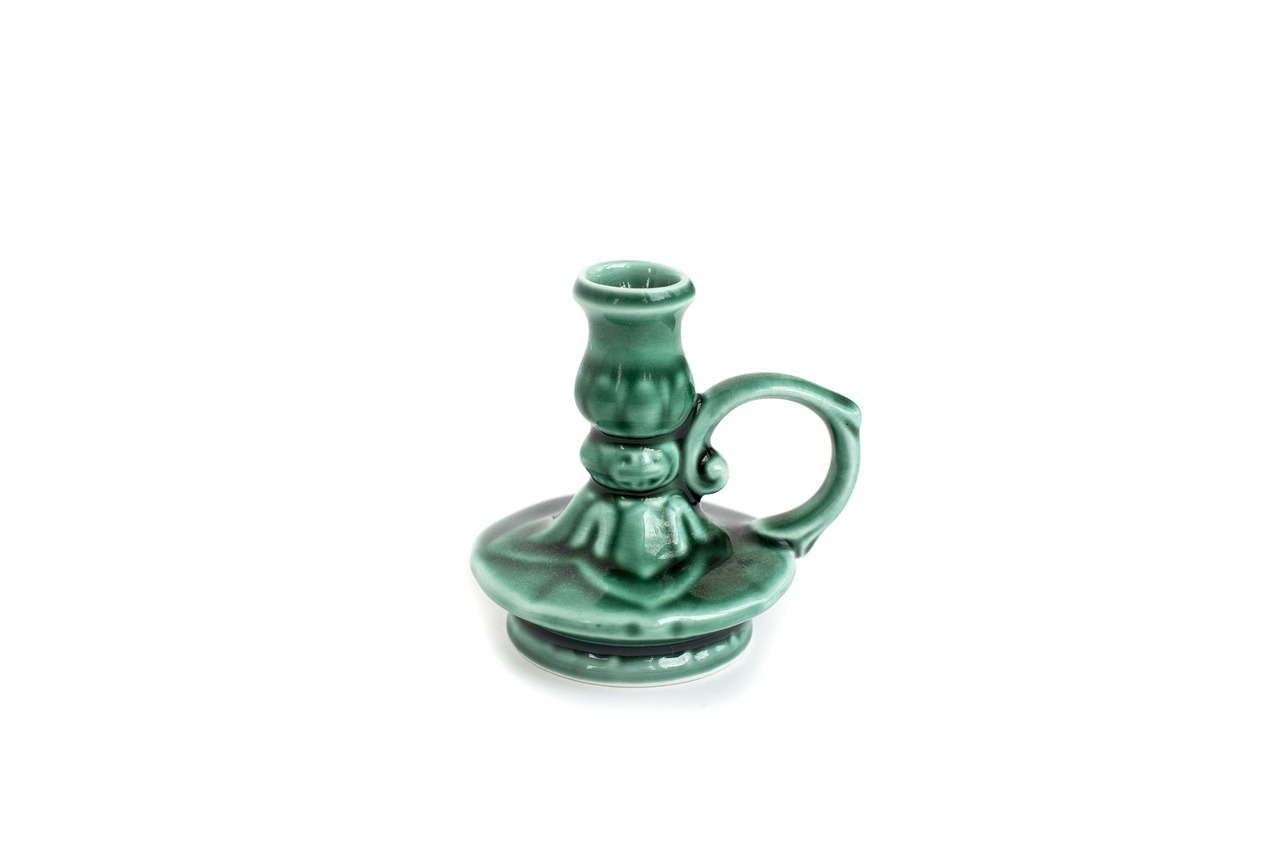
Wheel-Throwing Techniques
Wheel-throwing is a fascinating technique that has transformed the world of ceramics, allowing artisans to create uniform and intricate pottery pieces with remarkable precision. Imagine a potter at their wheel, hands skillfully shaping a lump of clay into a graceful vessel that seems to dance under their touch. This method, which dates back thousands of years, not only showcases the potter's technical skills but also reflects the cultural heritage and artistic expressions of various societies.
The origins of wheel-throwing can be traced back to ancient Mesopotamia around 3500 BCE. It was a groundbreaking innovation that marked a significant shift from hand-building methods to a more efficient and versatile approach to pottery-making. As the wheel turned, potters could produce items with consistent shapes and sizes, which was essential for both functional and decorative purposes. Over time, different cultures adapted this technique, each adding their unique flair and style. For instance, the Japanese have mastered the art of wheel-throwing to create exquisite tea bowls, while in Europe, potters have utilized it to produce everything from dinnerware to ornate vases.
One of the most intriguing aspects of wheel-throwing is the variety of forms that can be achieved. From simple bowls to complex teapots, the possibilities are nearly endless. The process begins with a centered lump of clay placed on the wheel. As the wheel spins, the potter uses their hands and various tools to shape the clay. The key to successful wheel-throwing lies in the potter's ability to control the speed of the wheel and the pressure applied to the clay. This delicate balance is what allows for the creation of beautifully symmetrical pieces.
While wheel-throwing is often associated with functional pottery, it also plays a significant role in the world of artistic ceramics. Many contemporary artists utilize this technique to push the boundaries of traditional pottery, experimenting with form, texture, and glaze. The result is a stunning array of ceramic art that challenges our perceptions of what pottery can be. For example, some artists create large-scale installations that integrate wheel-thrown elements, merging the worlds of sculpture and ceramics.
In terms of cultural significance, wheel-thrown ceramics often serve as a reflection of societal values and practices. In many cultures, pottery is not just about utility; it embodies a rich history and a connection to the earth. The act of working with clay is often seen as a meditative practice, allowing artisans to connect with their heritage and express their identity through their creations. Moreover, wheel-thrown pieces can be found in various rituals and ceremonies, symbolizing community, tradition, and continuity.
In conclusion, wheel-throwing is more than just a technique; it is a bridge between the past and the present, connecting us to ancient civilizations while inspiring modern creativity. Whether you're a seasoned potter or a curious beginner, exploring the world of wheel-throwing opens up a realm of artistic possibilities that can enrich your understanding of ceramics and the cultures they represent.
- What is wheel-throwing? Wheel-throwing is a pottery-making technique that involves shaping clay on a rotating wheel, allowing for uniform and intricate designs.
- How did wheel-throwing originate? It originated in ancient Mesopotamia around 3500 BCE and revolutionized pottery production by enabling more efficient and precise crafting.
- What types of pottery can be made using wheel-throwing? A wide range of pottery can be created, including bowls, vases, and teapots, with both functional and decorative purposes.
- Is wheel-throwing used in contemporary art? Yes, many contemporary artists use wheel-throwing techniques to create unique ceramic art that challenges traditional notions of pottery.

Ceramics in Cultural Rituals
Ceramics are more than just beautiful objects; they are deeply intertwined with the cultural fabric of societies around the globe. From ancient rituals to modern celebrations, pottery serves as a tangible connection to our ancestors and their beliefs. Imagine attending a wedding where the couple drinks from a beautifully crafted ceramic cup, symbolizing their unity and shared life ahead. This is just one example of how ceramics play a vital role in cultural rituals, serving both functional and symbolic purposes.
In many cultures, pottery is used in ceremonies that mark significant life events such as births, weddings, and funerals. For instance, in Mexican culture, the use of ceramics in Day of the Dead celebrations is profound. Families create intricate altars adorned with colorful pottery that honors their deceased loved ones, showcasing the belief that the dead continue to be part of the community. These pieces are not merely decorative; they carry deep emotional and spiritual significance, acting as a bridge between the living and the deceased.
Moreover, the use of ceramics in religious rituals cannot be overstated. In various traditions, specific pottery items are used in offerings or during sacred ceremonies. For example, in some African cultures, clay pots are used to hold offerings to ancestors, emphasizing respect and connection to lineage. The designs and colors of the pottery can also hold specific meanings, reflecting the values and beliefs of the community.
The interplay between functional and decorative ceramics is particularly fascinating. While some pottery serves practical purposes—like cooking or storage—others are created solely for aesthetic enjoyment or ritualistic use. This distinction reveals much about a culture's priorities. In Japanese tea ceremonies, for instance, the choice of tea bowls is not just about function; it reflects the host's aesthetic sensibility and respect for the guests. The beauty of the ceramics enhances the experience, making it a meditative and meaningful ritual.
To further illustrate the significance of ceramics in cultural rituals, consider the following table that summarizes various cultural practices involving pottery around the world:
| Culture | Ritual/Event | Type of Ceramics Used |
|---|---|---|
| Mexican | Day of the Dead | Decorative altars with colorful pottery |
| Japanese | Tea Ceremony | Tea bowls with aesthetic significance |
| African | Ancestor Offerings | Clay pots for offerings |
| Native American | Harvest Celebrations | Functional pottery for food and ceremonial use |
In conclusion, ceramics are not only artistic expressions but also vital components of cultural identity and rituals. They embody the stories, beliefs, and values of the people who create and use them. Whether it’s a simple clay pot or an elaborate ceremonial piece, each ceramic item holds a history that connects us to the past and enriches our understanding of various cultures. So, the next time you encounter a piece of pottery, take a moment to appreciate the depth of its significance in the cultural rituals it represents.
Q: What role do ceramics play in cultural rituals?
A: Ceramics serve both functional and symbolic purposes in cultural rituals, often representing significant life events and beliefs within a community.
Q: How do different cultures use ceramics in their ceremonies?
A: Various cultures incorporate ceramics in ceremonies such as weddings, funerals, and religious rituals, using them for offerings or as decorative elements that enhance the experience.
Q: What is the difference between functional and decorative ceramics?
A: Functional ceramics are used for practical purposes like cooking or storage, while decorative ceramics are created for aesthetic enjoyment or ritualistic use, often carrying deeper meanings.

Functional vs. Decorative Ceramics
When we think about ceramics, it's easy to get lost in the beauty of the pieces displayed in museums or art galleries. However, ceramics serve two primary purposes: functionality and decorative appeal. Understanding the balance between these two aspects sheds light on the values and priorities of different cultures throughout history. Functional ceramics are often practical items, designed for everyday use, while decorative ceramics are crafted primarily for visual enjoyment and artistic expression.
Functional ceramics include items like plates, bowls, mugs, and vases that serve a specific purpose in daily life. These pieces are often made with durability in mind, allowing them to withstand the rigors of everyday use. For instance, consider the classic Japanese tea ceremony, where the teapot and cups are not just beautiful but also designed to enhance the tea-drinking experience. Each piece is crafted with care, ensuring it fulfills its role while also reflecting the artistry of the maker.
On the other hand, decorative ceramics often take on a life of their own, showcasing the creativity and cultural narratives of the artists. These pieces may not be intended for practical use but instead serve as a means of storytelling or cultural expression. For example, the intricate designs found on Mexican Talavera pottery tell stories of the region's history and traditions, making them valuable not just as art but as cultural artifacts.
Interestingly, the line between functional and decorative ceramics can sometimes blur. A beautifully crafted vase, while primarily decorative, can also serve as a functional container for flowers. Similarly, a plate that is a work of art can still hold food. This interplay raises a fascinating question: how do we define the purpose of a ceramic piece? Is it the artist's intention, the viewer's perception, or perhaps a combination of both?
In many cultures, the distinction between functional and decorative ceramics is deeply intertwined with social practices and rituals. For example, in some Indigenous cultures, pottery serves both as practical cooking vessels and as ceremonial items. The designs might symbolize important cultural beliefs, bridging the gap between utility and artistry. This duality enriches our understanding of ceramics as not just objects but as integral parts of cultural identity.
To illustrate the differences and overlaps between functional and decorative ceramics, let’s take a look at the following table:
| Type of Ceramics | Characteristics | Examples |
|---|---|---|
| Functional Ceramics | Designed for everyday use, durable, practical | Plates, bowls, mugs, cooking pots |
| Decorative Ceramics | Primarily for aesthetic enjoyment, often intricate and artistic | Vases, sculptures, ornamental tiles |
| Hybrid Ceramics | Combines functionality with artistic expression | Artistic bowls, decorative plates |
In conclusion, the distinction between functional and decorative ceramics is not merely a classification; it reflects the rich tapestry of human experience, creativity, and cultural identity. As we explore ceramics, we gain insight into the societies that create them, revealing their values, beliefs, and artistic expressions. Whether it’s a humble mug or an ornate vase, each piece tells a story that connects us to the past and enriches our understanding of the present.
- What is the main difference between functional and decorative ceramics? Functional ceramics are made for practical use, while decorative ceramics are primarily created for aesthetic purposes.
- Can a ceramic piece be both functional and decorative? Yes, many ceramics serve both purposes, combining beauty with utility.
- How do cultural practices influence ceramic design? Cultural beliefs and traditions often shape the design and use of ceramics, reflecting the values of the society that creates them.
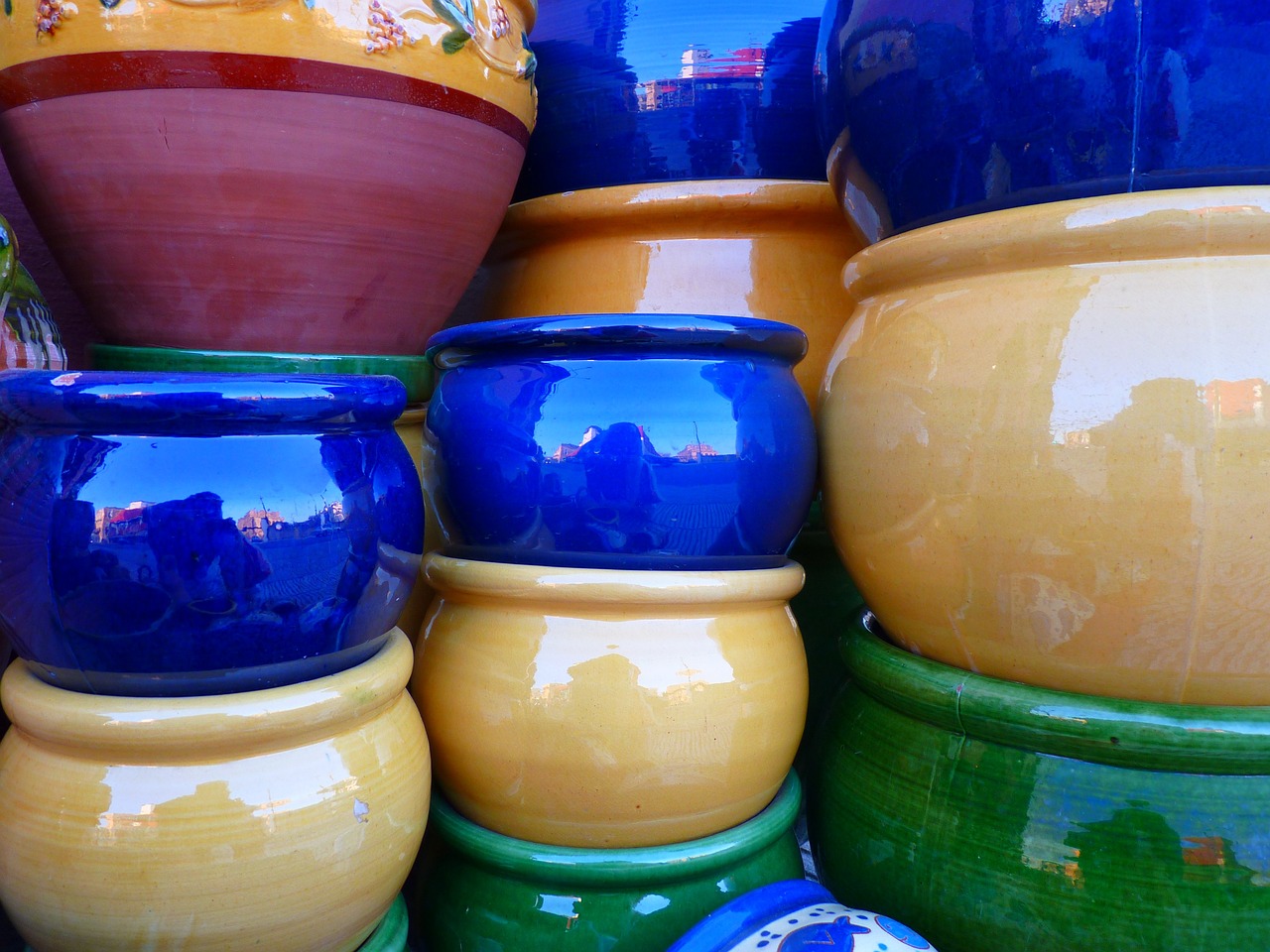
Symbolism in Ceramics
When we delve into the world of ceramics, we quickly discover that these beautiful creations are not just functional items or decorative pieces; they are also vessels of cultural identity and heritage. Each piece of pottery carries its own story, often intertwined with the beliefs, traditions, and values of the community that produced it. For instance, in many Indigenous cultures, ceramics are adorned with intricate patterns and symbols that represent various aspects of their spirituality, nature, and community life. These designs are not merely aesthetic; they serve as a visual language that communicates the identity and history of the people.
In Japan, the art of ceramics, particularly in the form of Raku pottery, is deeply embedded in the cultural practice of the tea ceremony. The unique glazes and textures of Raku pieces are often thought to symbolize the impermanence of life, echoing the Zen Buddhist belief that beauty lies in the transient nature of existence. This profound connection between ceramics and spirituality shows how pottery can encapsulate philosophical ideas, making each piece a reflection of the maker's worldview.
Moreover, the symbolism in ceramics can also be seen in the use of color and form. For example, in African cultures, specific colors and shapes are laden with meaning. A pot painted in vibrant red may symbolize fertility and life, while the use of geometric patterns can represent the interconnectedness of community and family. The functionality of these pieces—whether they are used in rituals, daily life, or as offerings—further enhances their symbolic significance.
To illustrate the rich tapestry of symbolism in ceramics, let’s look at a few notable examples:
| Culture | Symbolism | Example Ceramics |
|---|---|---|
| Native American | Connection to nature and spirituality | Clay pots with animal motifs |
| Japanese | Transience and beauty | Raku tea bowls |
| African | Community and heritage | Decorated storage pots |
| Chinese | Prosperity and good fortune | Blue and white porcelain vases |
As we can see, the symbolism in ceramics is as diverse as the cultures that create them. Each design, color, and technique tells a story, inviting us to engage with the rich narratives of different communities. This cultural dialogue is what makes ceramics not just objects of beauty but also important artifacts that preserve and communicate the essence of human experience.
In conclusion, when we appreciate ceramics, we are not merely admiring their physical form; we are also recognizing the deep-seated meanings they carry. They serve as a bridge connecting us to the past, allowing us to understand and appreciate the values and beliefs of cultures around the world.
- What is the significance of symbols in ceramics?
Symbols in ceramics often represent cultural beliefs, traditions, and identity, serving as a visual language that conveys the maker's worldview. - How do different cultures use ceramics symbolically?
Different cultures use ceramics to express various aspects of life, such as spirituality, community values, and historical narratives through unique designs and colors. - Can ceramics be both functional and symbolic?
Absolutely! Many ceramic pieces serve practical purposes while also carrying deep symbolic meanings, reflecting the balance between utility and artistry.
Frequently Asked Questions
- What are the main techniques used in ceramic production?
Ceramic production showcases a variety of techniques, each with its own unique flair. The most common methods include wheel-throwing, which allows for uniform shapes, and hand-building, which includes techniques like pinch pots and coil building. Each technique reflects the culture and skill of the artisans who create them.
- Why is the history of ceramics important?
The history of ceramics offers a fascinating glimpse into ancient civilizations. It tells us about their daily lives, cultural practices, and artistic expressions. By studying ceramics, we can better understand the evolution of societies and how pottery has played a role in shaping cultural identities over time.
- What is the significance of ceramics in cultural rituals?
Ceramics hold a special place in many cultural rituals and traditions. They are often used in ceremonies, celebrations, and even everyday life, symbolizing values and beliefs of different communities. Whether it’s a decorative piece used in a wedding or functional pottery for daily meals, ceramics reflect the essence of cultural identity.
- How do functional and decorative ceramics differ?
Functional ceramics are designed for everyday use, while decorative ceramics focus on aesthetic appeal. The balance between utility and artistry varies across cultures, showcasing their priorities and values. For instance, a beautifully crafted vase may serve as a centerpiece, while a sturdy bowl is essential for daily meals.
- What role does symbolism play in ceramics?
Symbolism in ceramics is rich and varied, often tied to cultural narratives and beliefs. Specific designs and motifs can convey deep meanings, representing heritage, identity, or spiritual significance. This aspect of ceramics enhances our understanding of the cultural context and the stories behind each piece.



















